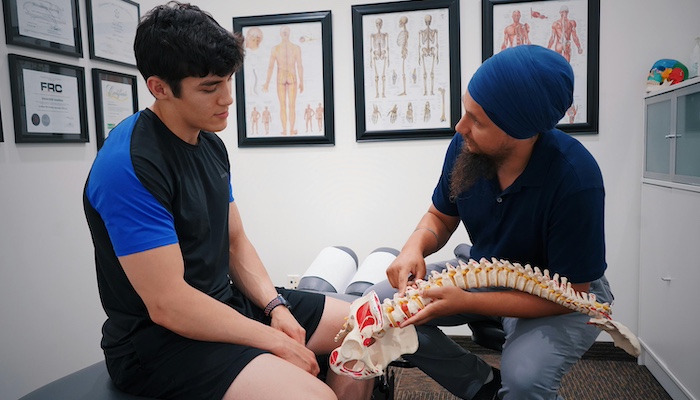
The spinal disc serves as a robust and elastic pivot for each spinal joint, offering stability while enabling a wide range of motion in the lower back and neck. However, when a disc begins to lose its strength and flexibility, it can lead to various painful and potentially disabling symptoms.
This article simplifies the complex topic of spinal disc problems, highlighting the most crucial aspects.
What is a Spinal Disc?
Spinal discs are circular and flat, attached securely between the vertebrae above and below them. These discs are slightly flexible, providing shock absorption for the spine. Due to the stress experienced by the lower back and neck, coupled with age-related changes, spinal discs are susceptible to injury.
- Lower Spine: When the disc deteriorates in the lower spine, it can cause lower back pain, leg pain, and symptoms like numbness and weakness.
- Neck: A disc issue in the neck can lead to pain and symptoms in the neck, shoulder, arm, and potentially the hand.
Spinal disc problems are often misunderstood because medical professionals may disagree on the causes of disc-related pain, and patients may struggle to grasp this complex and usually poorly explained subject.
Additionally, confusion arises because many terms, such as pinched nerve, degenerated disc, slipped disc, herniated disc, and bulging disc, are used interchangeably to describe spinal disc issues.
Disc Pain vs. Nerve Root Pain
Although numerous terms describe disc problems, they generally fall into two main categories:
- Degenerative Disc Disease:
- Pain originating within the disc itself results in either axial or referred pain. This condition can develop as the discs in the spine age, leading to a loss of flexibility and shock absorption. The disc's inner portion may shrink, reducing cushioning between vertebrae, and the outer part may develop small tears, causing pain. Both biochemical and biomechanical factors can contribute to this pain.
- On this site, we refer to this type of pain as "degenerative disc disease."
- Herniated Disc:
- If the disc issue causes nerve root pain, pain that travels along a nerve exiting the spine is referred to as radicular pain. This occurs when the disc's inner material, the soft nucleus, leaks out (or "herniates") and touches a nerve root. The material inside the disc is highly inflammatory, and contact with a nerve can be painful.
- The pain and other symptoms, such as numbness, tingling, or weakness, usually follow the nerve's path. A herniated disc in the lower spine can cause pain along the sciatic nerve down the leg, while one in the cervical spine can cause pain radiating down the arm.
- This site uses the term "herniated disc" for this type of pain.
Regardless of the term used—slipped disc, bulging disc, degenerated disc, etc.—the most crucial factor is understanding whether the pain originates within the disc itself or along the nerve root.
Precision Pain Care and Rehabilitation has two convenient locations in Richmond Hill – Queens, and New Hyde Park – Long Island. Call the Queens office at (718) 215-1888 or (516) 419-4480 for the Long Island office to arrange an appointment with our Interventional Pain Management Specialists, Dr. Jeffrey Chacko or Dr. Sonny Ahluwalia.















